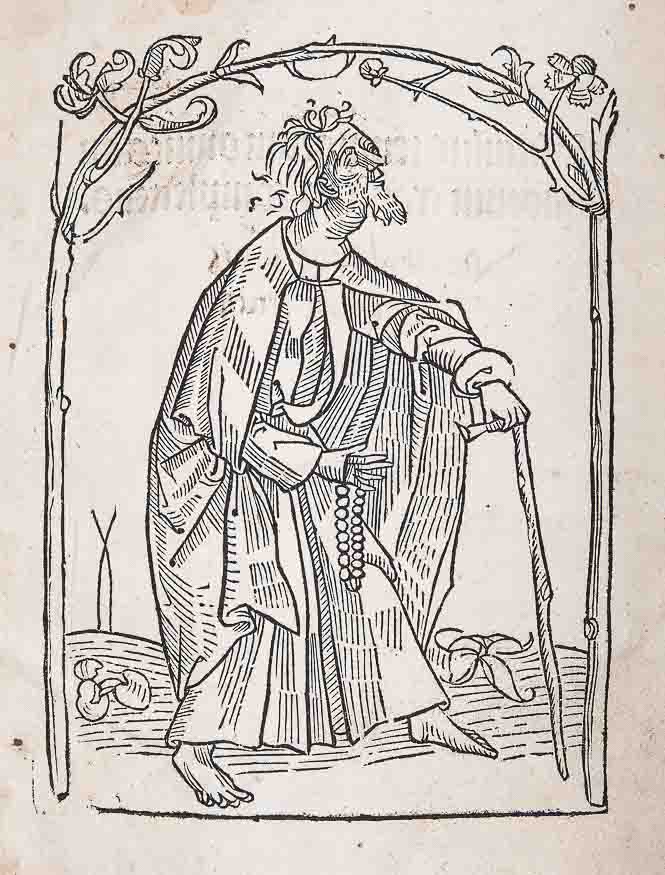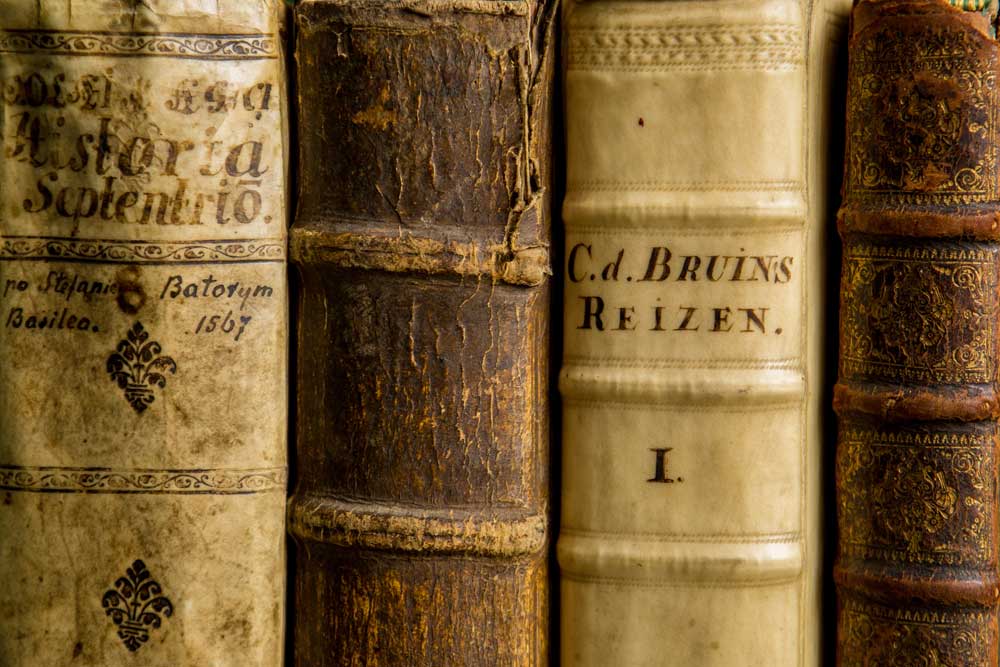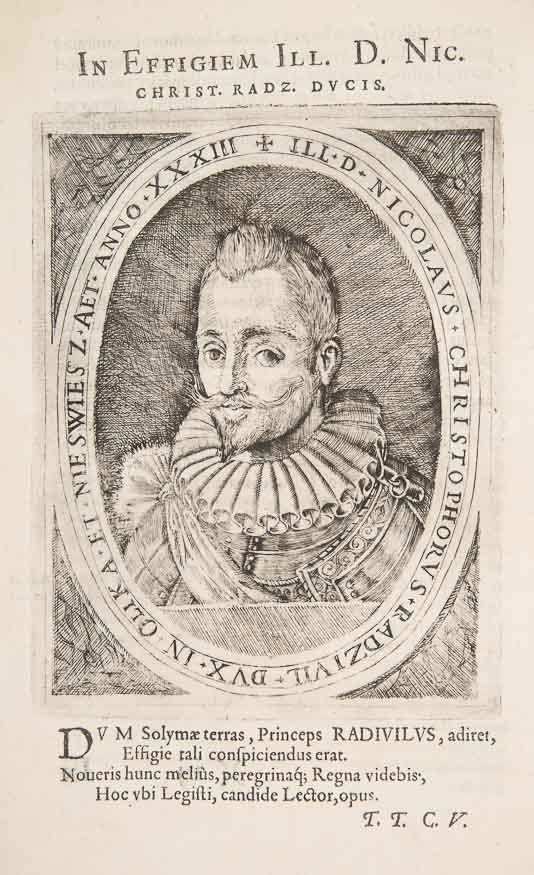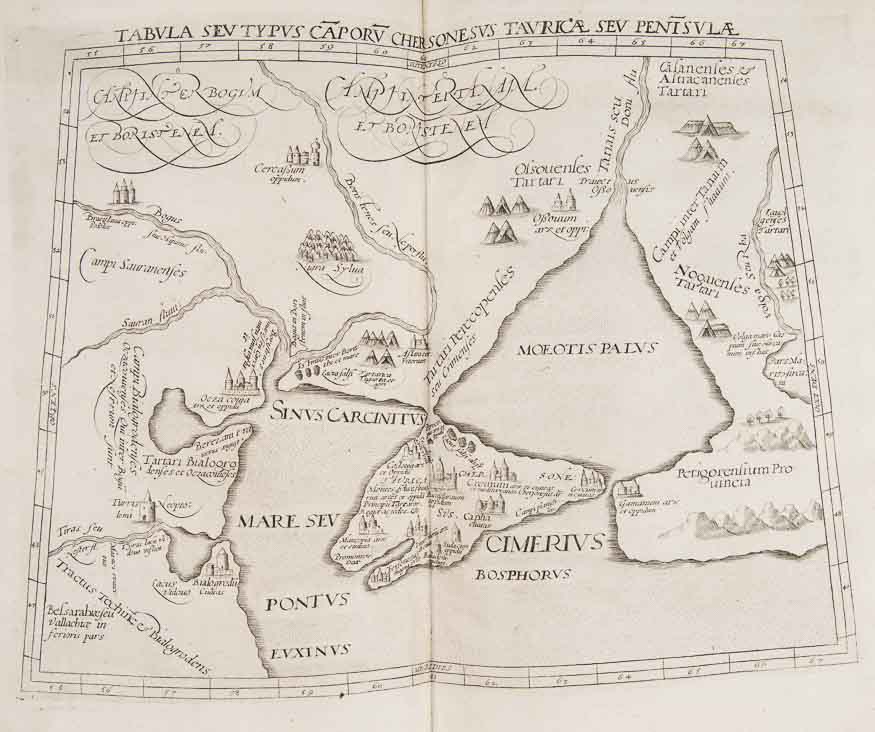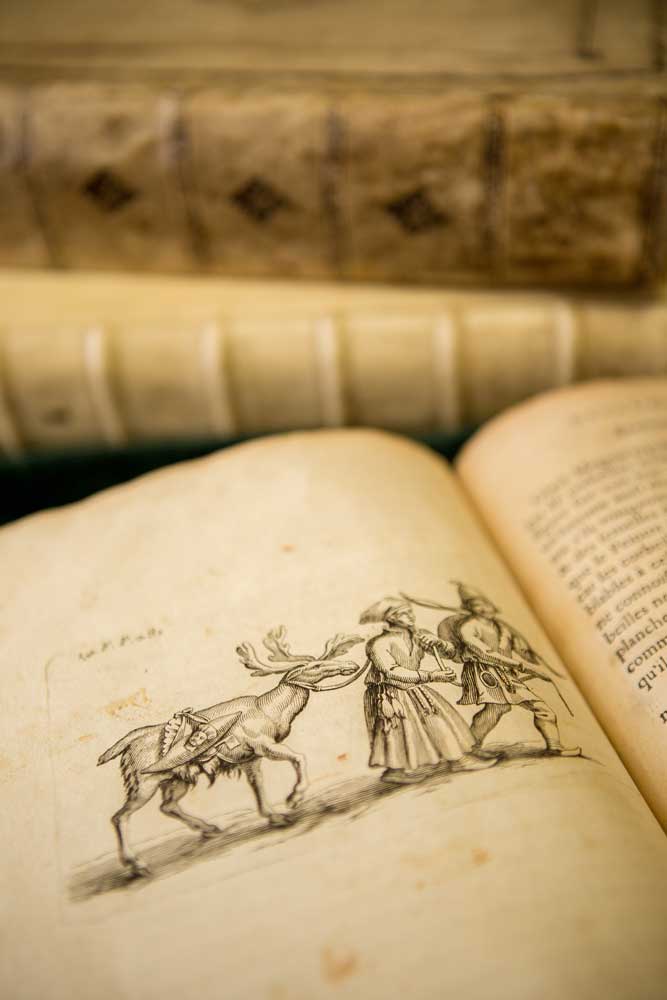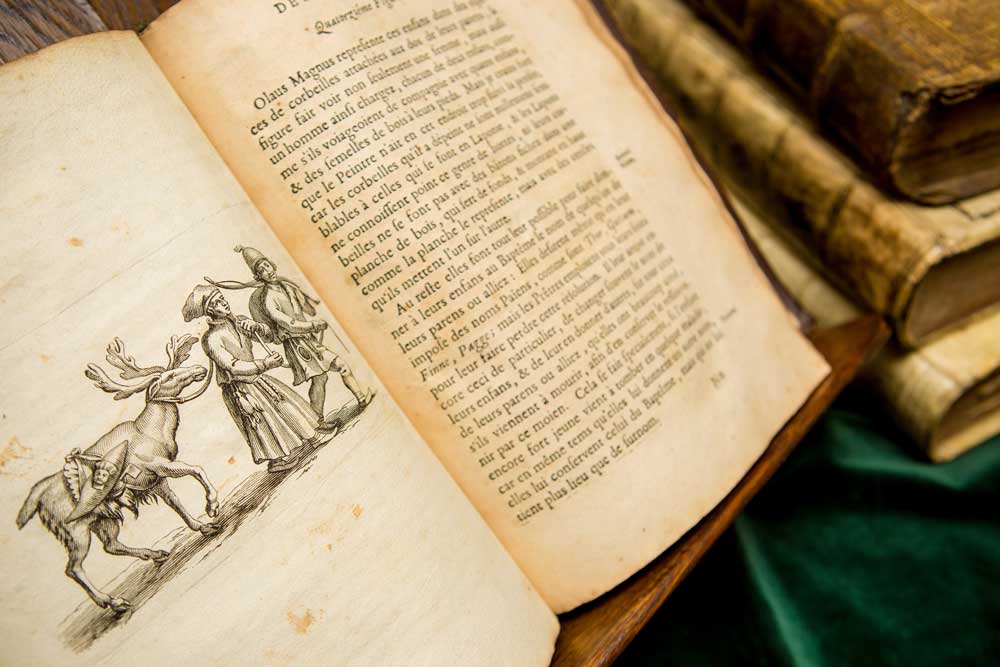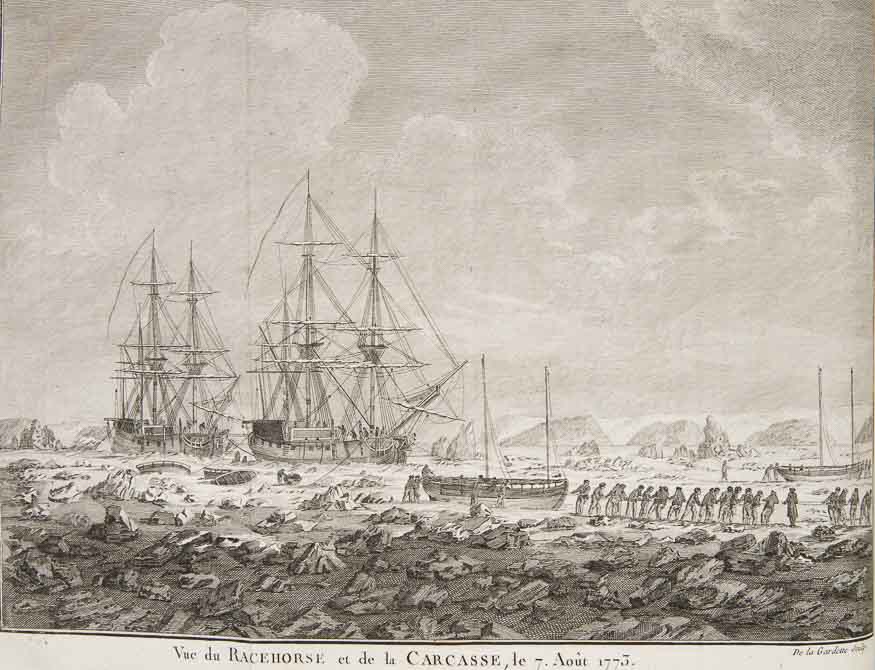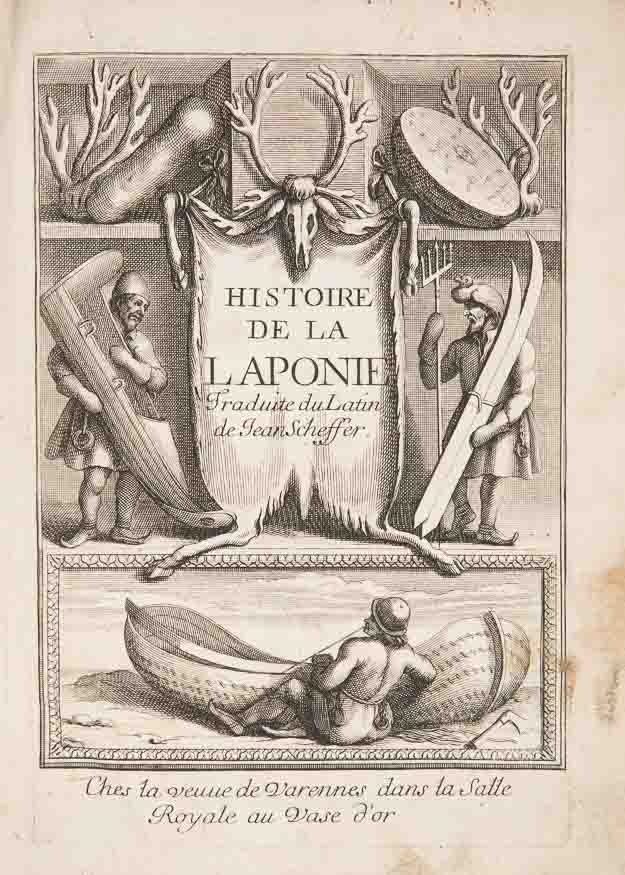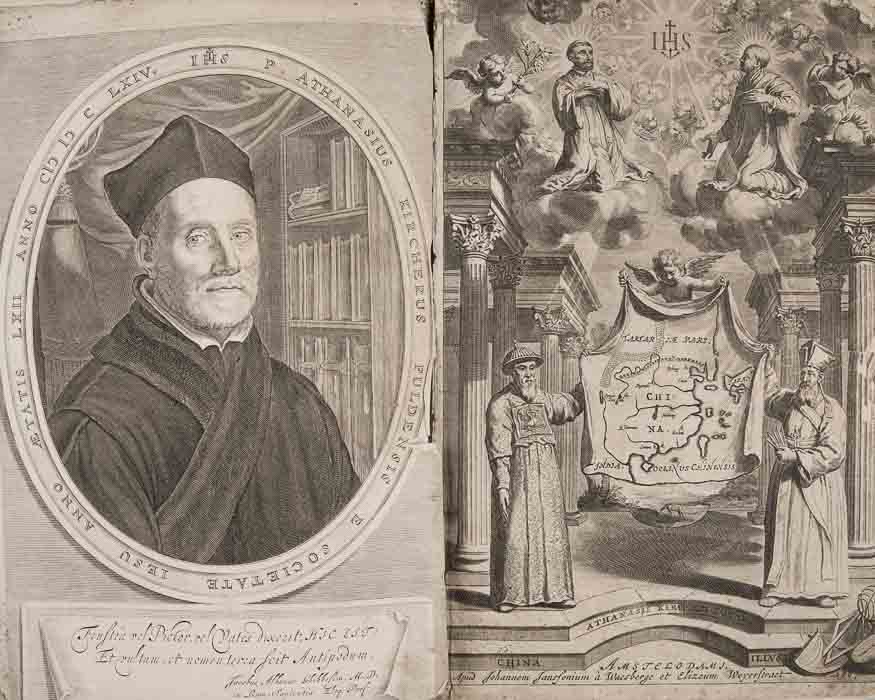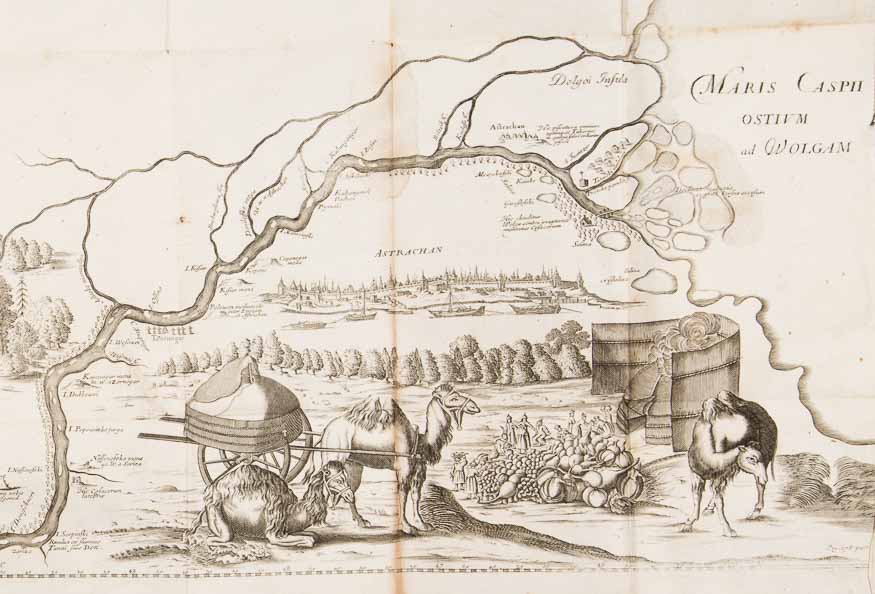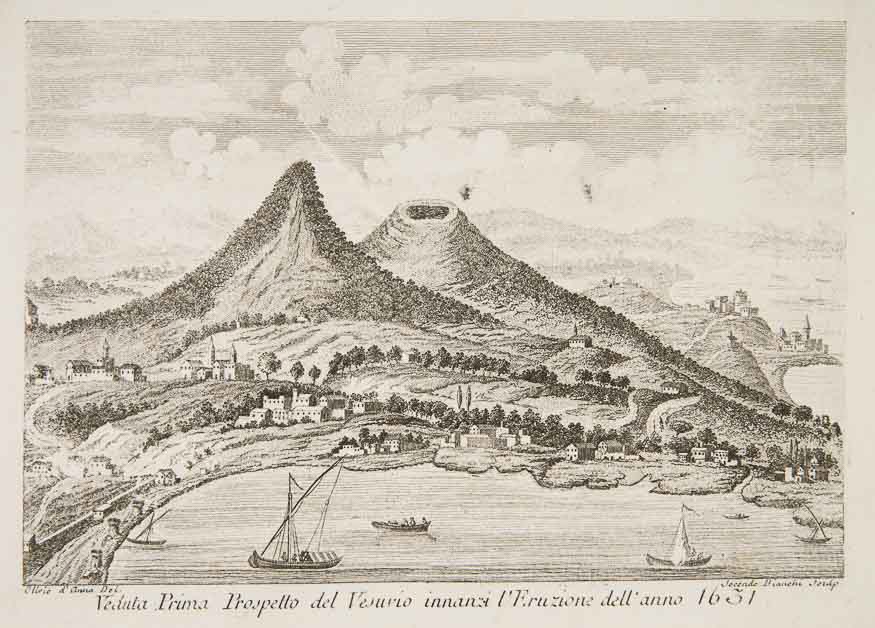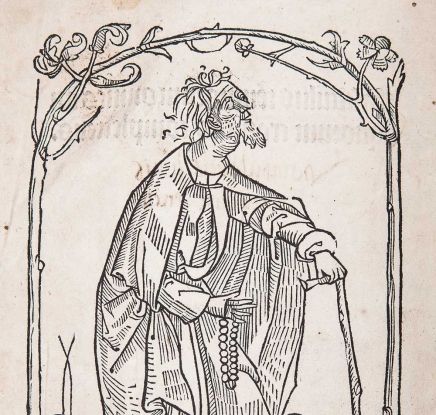
The exhibition titled Pilgrims, Travellers, Tourists – Exploring the World. From the NMK Collection of Old Prints and Maps presents a selection of 60 works dating back to the period from the 15th to the 19th century and devoted to travels, which we learn about through memoirs and literature related to historiography and geography. The old volumes are accompanied by 19 antique maps and atlases.
But I have swam through libraries and sailed through oceans. (Herman Melville, Moby Dick)
To this day, the intrinsic need to undertake peregrinations and long journeys shapes the human psyche, mind and builds societies. Eternally inherent in the human condition and our desire to explore the world, it is reflected in the pages of old books and antique maps. The displayed selection of 60 works dating back to the period from the 15th to the 19th century includes memoirs and literature related to travelling, historiography and geography as well as tourist guidebooks, complemented by maps and atlases (19), published in the period from the 16th to the 20th century.
We are introduced to the world of pilgrimages, depicted through the prism of Christianity, by a blind monk, perhaps a beggar-pilgrim, portrayed in a woodcut taken from the history of the world by Werner Rolewinck, published around 1490. Pilgrims can also be found in the illustrations for a volume dating back to 1587 and describing a pilgrimage to Jerusalem. A depiction of our native pilgrim – Mikołaj Krzysztof Radziwiłł – can be seen in his Peregrination to the Holy Land from 1601 and 1611. A special cult of Our Lady is illustrated in sacred images portraying Mary and in the descriptions of sanctuaries which were dedicated to her. Particularly worthy of interest is the depiction of Our Lady of Częstochowa in the first preserved printed leaflet for pilgrims, probably published in Krakow around 1521, which tells the story of the miraculous image. The importance of pilgrimage in Islam is reflected in the depiction of the holiest city of the Muslims – Mecca and Al-Ka'bah, derived from the description of Arabia published in 1847 .
Journeys – generally undertaken since antiquity – in the Middle Ages became the domain of merchants, pilgrims and students. However, it was the great geographical discoveries of the 15th and the 16th centuries that brought about a breakthrough in the scope of results of the undertaken expeditions. The images of such great explorers as Columbus, Amerigo Vespucci, Ferdinand Magellan can be admired on the spectacular two-part map of the Americas from the historical Atlas by Henri Abraham Chatelain, dating back to 1732.
From our perspective, the most interesting results of travelling were the memoirs, descriptions, scientific treatises and short reports in the form of letters written by the participants. They were often published along with plans and maps, sometimes introducing a model later reproduced by other cartographers, such as in the case of the map of Crimea published in Marcin Broniowski's work dating from 1595 – Tartariae Descriptio. A great advantage of these works lay in the illustrations they featured, which depicted the exotic nature of these lands, their inhabitants and wildlife. Richly illustrated works include books by scholars: Athanasius Kircher about the Far East dating from 1667, Johannes Scheffer's volume on Lapland from 1678, or The History of the Northern Peoples by Olaus Magnus from 1567. Magnus's work was supplemented with a reduced and modified version of the so-called Carta Marina – a map published for the first time in 1539 in Venice. It was the earliest, relatively faithful reproduction of the Scandinavian Peninsula and the Baltic Sea coastline. The most up-to-date 17th-century depiction of the lower Volga River can be admired on the map from Adam Olearius's work on his travels to Moscow and Persia in the years 1633-1639. Literature also indicates that it took a long time for the Europeans – who at the same time ventured across the oceans – to explore their own continent.
Travellers also became the addressees of various guides and itineraries which provided specific, practical information on expeditions. A tourist, beginning his peregrinations along European routes in the 17th century and becoming increasingly visible in the 18th century, was a man of the elites, who in his Grand Tour gained knowledge and experience, or sought relaxation and healing in spas. Thanks to such inventions like railways and steamships, the 19th century brought about economic and social changes, followed by mass tourism and its development. These changes are depicted in a large transportation map of the world, published in Paris in 1884 and featuring a dense network of rail and maritime connections at sea and on land.
Collection of Old Prints and Maps, Pilgrims, Travellers, Tourists
The Hutten-Czapski Museum
ul. Piłsudskiego 12, 31-109 Kraków- Monday: closed
- tue : 10.00-18.00
- wednesday-sunday: 10.00-16.00
